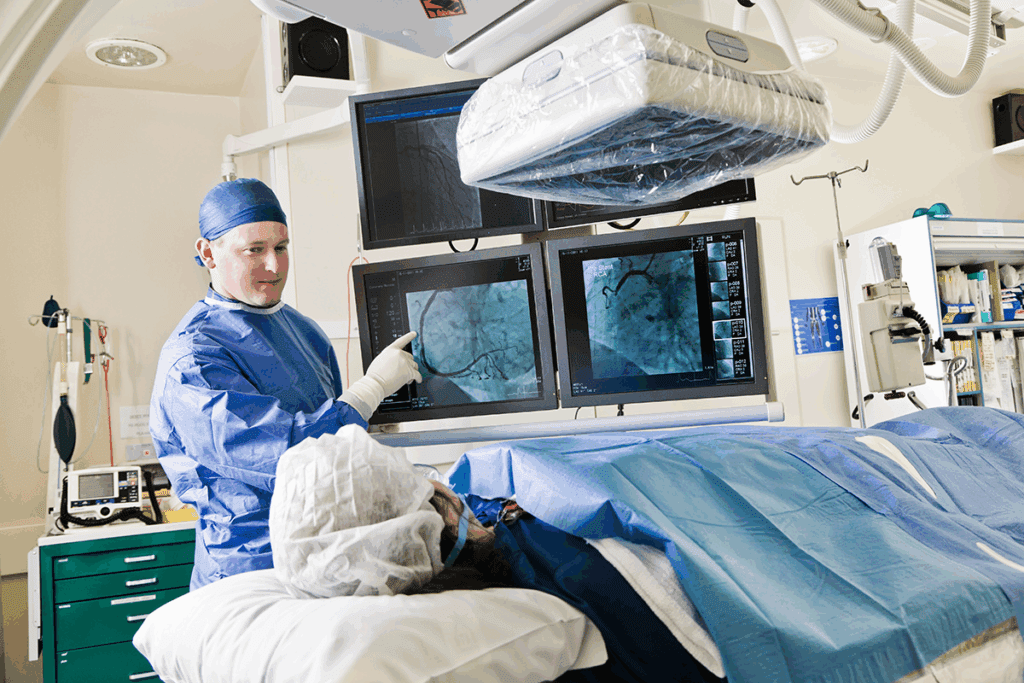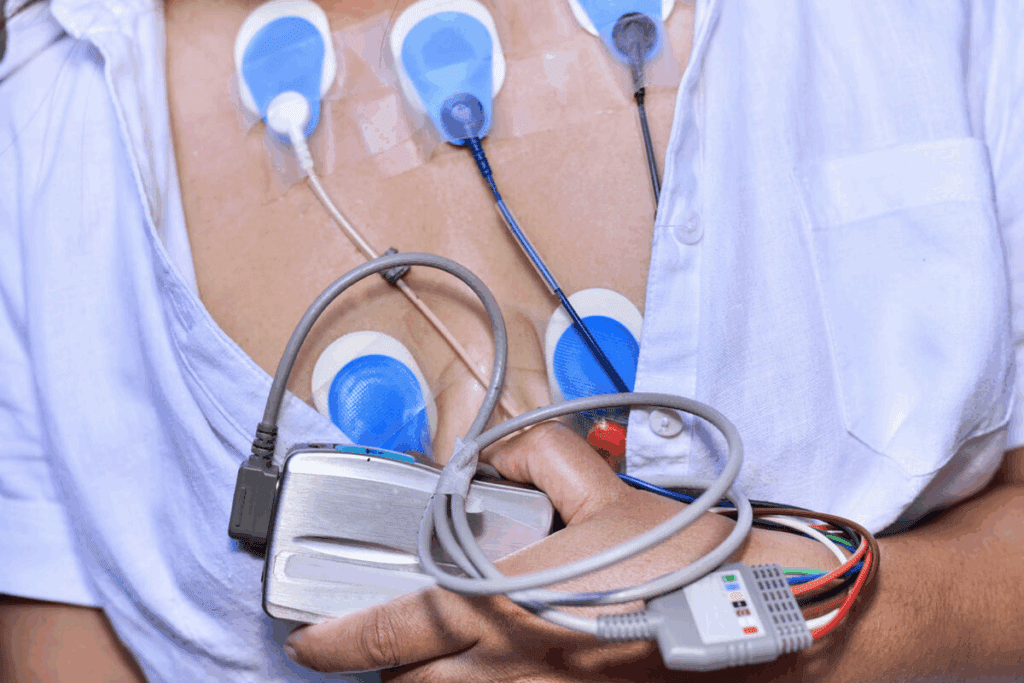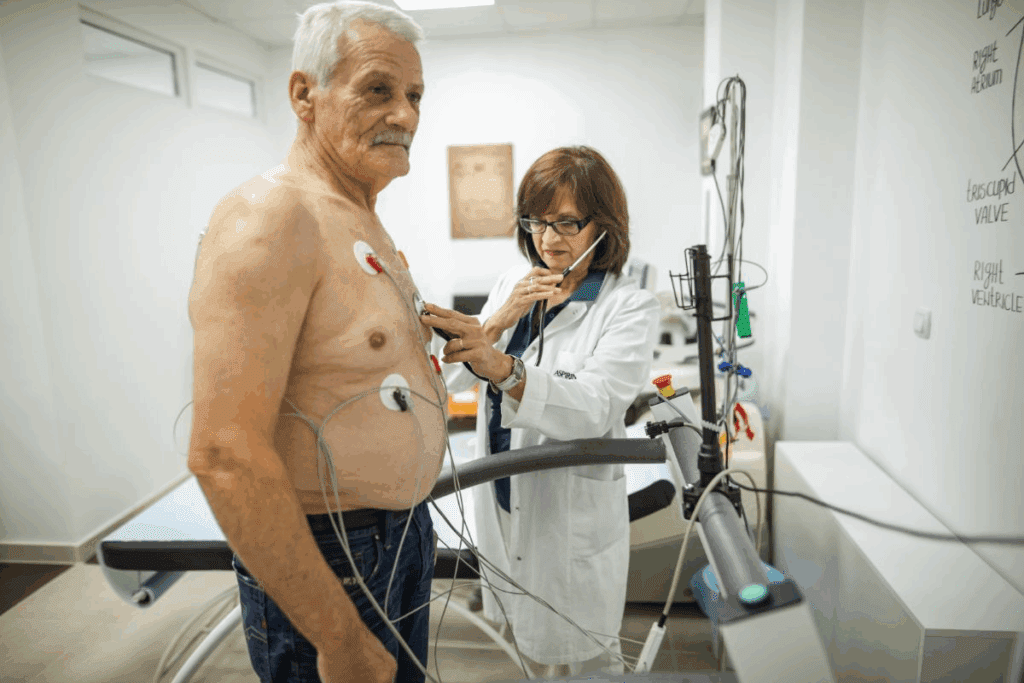Last Updated on November 25, 2025 by Ugurkan Demir

At Liv Hospital, we’ve helped many patients after cardiac ablation. This procedure treats irregular heart rhythms like atrial fibrillation (AFib). Discover 3 months after cardiac ablation what recovery looks like, key milestones, and what to watch for in heart health.
During this time, patients often feel less irregular heartbeat. But, some might feel temporary symptoms like palpitations, mild chest pain, and tiredness. These are normal signs of recovery. Our team is here to support you, guiding you through what’s normal and what to expect during your recovery.

Understanding the recovery process after cardiac ablation is key for patients. The journey has several stages, each with its own challenges and milestones. We’ll guide you through what to expect in the first month, the progress by the second month, and the medical follow-ups that are vital for recovery.
The first month after cardiac ablation is very important. Patients often feel discomfort at the catheter site, get tired easily, and may have palpitations. These feelings are usually temporary and normal. It’s important to follow your doctor’s advice and report any unusual symptoms. Rest and avoiding hard activities are key during this healing time.
By the second month, many patients start to feel much better. The discomfort at the catheter site usually goes away, and energy levels start to rise. While some may have occasional palpitations, they are less frequent and less severe. This is a good sign that the heart is healing. It’s also a time when patients can slowly start doing more physical activities, with their doctor’s approval.
Regular medical check-ups are a big part of recovery. Your healthcare team will keep an eye on your heart’s function and overall health. These visits may include ECGs, Holter monitoring, or other tests to see how well the ablation worked and to catch any problems early. Going to these appointments is important for a smooth recovery.

Knowing about the “blanking period” is key for those who’ve had cardiac ablation. It’s the time right after the procedure when the heart is adjusting. This period can last a few weeks to a couple of months.
Right after ablation, some patients might feel arrhythmias. But, these early heart rhythms don’t mean the procedure failed. The heart is healing and responding to the treatment, which can cause these rhythms.
It’s important to tell the difference between normal healing rhythms and those that might be a problem. Most early arrhythmias are just the heart healing and go away in a few weeks.
The “blanking period” can last from 4 to 12 weeks for different people. During this time, you might feel palpitations, be tired, or have mild chest pain.
| Symptom | Typical Duration | Action |
| Palpitations | Variable, often resolving within weeks | Monitor and report persistent or severe cases |
| Fatigue | Can last several weeks | Rest, gradually increase activity |
| Mild Chest Discomfort | Usually resolves within a few weeks | Report if severe or persistent |
While many symptoms during the “blanking period” are normal, there are times to call your doctor. If you have severe or ongoing arrhythmias, bad chest pain, or other worries, get help right away.
Your healthcare provider can offer guidance and reassurance, helping you navigate this critical phase of your recovery.
The journey to recovery starts to show positive changes around three months after cardiac ablation. Patients begin to see better heart health. Many notice big improvements in their condition.
As we move into the third month, the ablation’s effects grow stronger. This leads to fewer irregular heartbeat symptoms for many. Doctors say this period is key, marking a big change in recovery.
One big change is fewer irregular heartbeat symptoms. Many feel their heart beats more steadily, improving their life quality. As a cardiologist, notes, “By three months post-ablation, most patients see a big drop in arrhythmia episodes.”
This better rhythm comes from the heart’s healing. The ablation creates scar tissue that blocks bad electrical paths. This leads to a more regular heartbeat over time.
Even with big improvements, healing is not done. The heart keeps recovering from the ablation. The scar tissue from the procedure is also maturing.
As Jane Doe, a patient who underwent cardiac ablation, shared, “I felt much better by the third month. My energy was back, and I enjoyed activities I hadn’t done in years.”
It’s key for patients to keep following their doctor’s advice. Regular check-ups and monitoring help ensure the heart heals right. They also help catch any issues early.
Knowing what to expect in recovery helps patients move towards better heart health after cardiac ablation.
At the three-month mark after cardiac ablation, many wonder if their symptoms are normal. Some may feel occasional palpitations or mild chest discomfort. It’s important to know if these symptoms are okay or if they mean something more serious.
Even three months after cardiac ablation, occasional palpitations are common. These can happen for many reasons, like the heart healing. Most of the time, having palpitations now and then is not a big worry unless they happen a lot, last a long time, or come with other symptoms like dizziness or chest pain.
To understand palpitations better, let’s look at some data:
| Symptom | Frequency | Concern Level |
| Occasional Palpitations | 1-2 times a week | Low |
| Frequent Palpitations | Multiple times a day | Moderate to High |
| Prolonged Palpitations | Lasting more than 30 minutes | High |
Some patients may feel mild chest discomfort three months after cardiac ablation. This is often because the heart tissue is healing. But it’s key to tell normal discomfort from signs of a problem.
When you feel mild chest discomfort, think about these points:
While some symptoms like occasional palpitations and mild chest discomfort are normal, it’s important to know when they might mean something serious. Severe symptoms, such as intense chest pain, trouble breathing, or severe palpitations, need quick medical help.
Knowing what symptoms are normal and when to get help can help patients feel more confident in their recovery. Always talk to your doctor if you’re worried about your symptoms or how you’re doing.
Getting back to physical activity after cardiac ablation needs careful steps. It’s important to know the milestones and guidelines for a safe recovery. This will help you get back to your usual activities.
Patients usually start with light activities two weeks after the procedure. This first step is key to see how your body reacts and to avoid complications. Walking is a great start because it’s easy on your body and can be adjusted as needed.
As you get better, you can do more intense activities. But remember to listen to your body and don’t overdo it. Too much can strain your heart.
By three months, most people can do more intense activities again. But always follow your doctor’s advice, as everyone recovers differently.
Here’s a simple guide to help you understand the progression:
| Timeframe | Activity Level | Examples |
| 0-2 weeks | Light | Short walks, light stretching |
| 2-6 weeks | Moderate | Brisk walking, yoga |
| 3 months+ | Vigorous | Running, swimming, and intense gym workouts |
It’s important to work with your doctor to make a personalized exercise plan. This plan will fit your specific needs and health. Your doctor can give you great advice on safe and good activities for you.
Think about these things when making your plan:
By following these guidelines and working with your healthcare provider, you can safely and effectively get back to physical activity after cardiac ablation.
Many patients feel tired after cardiac ablation. They wonder why and how to feel better. Fatigue is a common symptom that can really affect a patient’s life during recovery.
Cardiac ablation changes how the body works, affecting energy levels. The procedure can cause inflammation and irritation. This makes patients feel tired as their body heals.
The heart’s efficiency in pumping blood also drops during recovery. This can make patients feel even more tired. As the heart heals, the body’s energy needs may exceed what it can supply, leading to exhaustion.
It’s important to know the difference between normal and concerning fatigue after cardiac ablation. While some tiredness is okay, certain signs may mean you need to see a doctor.
There are many ways to fight fatigue after cardiac ablation. Here are some strategies to help patients feel better:
By understanding why fatigue happens and using these strategies, patients can improve their recovery and overall health.
The heart’s healing after cardiac ablation is complex and interesting. We’ll look into the detailed processes that happen as the heart recovers from the procedure.
Tissue healing after cardiac ablation usually takes three months. During this time, the heart changes a lot at the cellular level. The ablation sites, where the abnormal electrical pathways were disrupted, begin to heal and transform.
This period is very important for patients as they go through recovery. It’s important to remember that healing is slow, and patience is essential.
The change in ablation sites is amazing. At first, they look like scar tissue. But over time, they change into healthy tissue.
While the heart heals on its own, you can help it. A healthy lifestyle, including a balanced diet and regular exercise, can significantly contribute to your overall cardiovascular health.
Also, following your doctor’s advice and going to follow-up appointments is key. It helps monitor your progress and address any issues during recovery.
Understanding how the heart heals after cardiac ablation helps patients. It lets them know what to expect and how to support their heart’s recovery.
After cardiac ablation, patients often see big improvements in their life quality. This time is key to seeing the full benefits of the treatment. It helps them adjust to a new way of living.
By the third month, many feel much better. They notice less irregular heartbeat symptoms. This is thanks to the heart healing and the ablation working well.
Patients also feel more energetic and less tired. They can do more of their daily tasks easily. This is thanks to their care plan and doctor visits.
After three months, patients keep getting better. Their heart heals more, and the ablation’s benefits grow. They often feel more energetic and physically better.
It’s important for patients to keep talking to their doctor. Regular check-ups help catch any problems early. This keeps them on the right path with their recovery.
Getting used to life after cardiac ablation means paying attention to your body. You might need to make big changes, like exercising more or eating better. Managing stress is also key.
Accepting this new normal means looking forward to more improvements. By doing so, patients can enjoy a better life after their treatment.
We know everyone recovers differently. But with the right care, most patients see big life quality boosts in the 3-6 month period after cardiac ablation.
Recovering from cardiac ablation is more than just healing from the procedure. With the right care and lifestyle changes, many patients see big improvements in their health. They enjoy a better quality of life after the treatment.
By three months after the ablation, most patients start to feel much better. They no longer have irregular heartbeat symptoms and can slowly get back to normal activities. Knowing what to expect during recovery helps support your heart’s healing.
Life after cardiac ablation means embracing a new normal. It’s about making long-term lifestyle changes to keep your heart healthy. By following your doctor’s advice and making a personalized plan, you can look forward to a healthier, more fulfilling life. The recovery time may vary, but with the right approach, many manage their condition well.
We encourage you to stay committed to your recovery plan. With time, patience, and the right care, you can enjoy the benefits of a successful cardiac ablation recovery.
After cardiac ablation, you might feel palpitations, mild chest discomfort, and fatigue. These symptoms are usually temporary and normal during recovery.
Start with light activities and slowly increase intensity. Most can do more vigorous activities by three months. Always follow your doctor’s advice.
Fatigue is common after ablation due to the body’s response. It’s important to know if it’s part of recovery or a sign of a problem.
The “blanking period” is the initial time after ablation, lasting weeks to months. During this time, arrhythmias may occur, but it doesn’t mean the procedure failed.
Heart tissue healing takes about three months. Knowing how ablation sites change and what supports healing helps understand recovery.
By three months, many notice big improvements. Symptoms of irregular heartbeat lessen, and the heart rhythm becomes more stable.
Most can do vigorous activities by three months. Always follow your doctor’s advice and create a personalized exercise plan.
Knowing the difference between normal symptoms and complications is key. This helps navigate recovery effectively.
Follow your doctor’s guidance, live a healthy lifestyle, and attend regular check-ups. This supports your heart’s healing.
Recovery time varies, but most see big improvements in three to six months. Understanding your recovery journey helps you towards a healthier life.
National Center for Biotechnology Information. (2025). 3 Months After Cardiac Ablation 9 Key Recovery. Retrieved from https://pmc.ncbi.nlm.nih.gov/articles/PMC5811184/)
Subscribe to our e-newsletter to stay informed about the latest innovations in the world of health and exclusive offers!